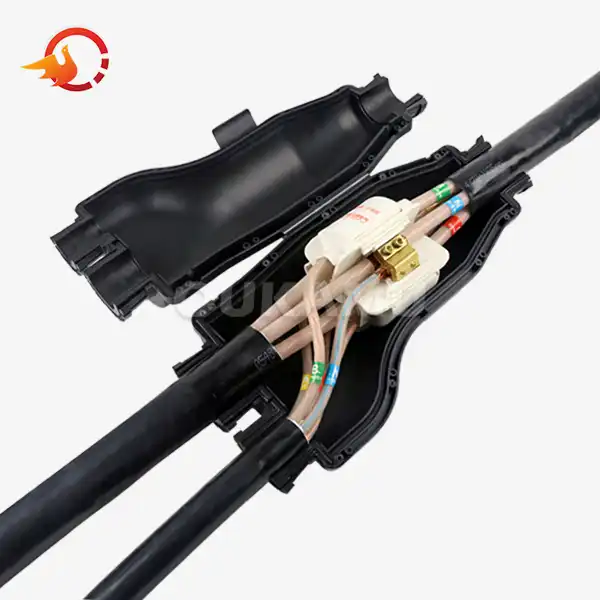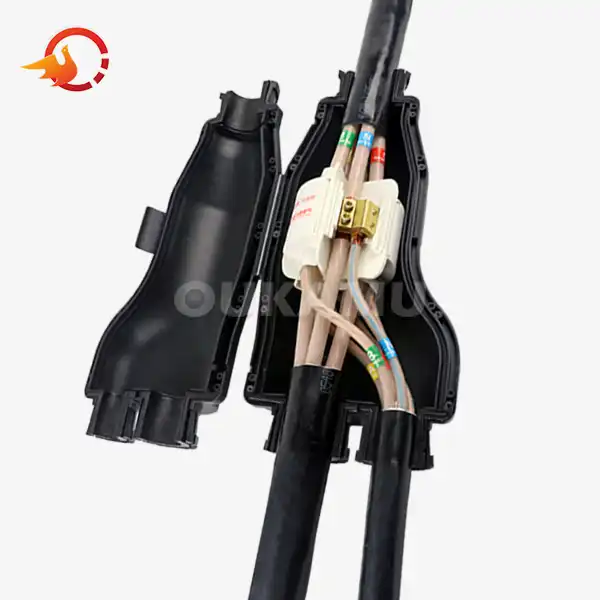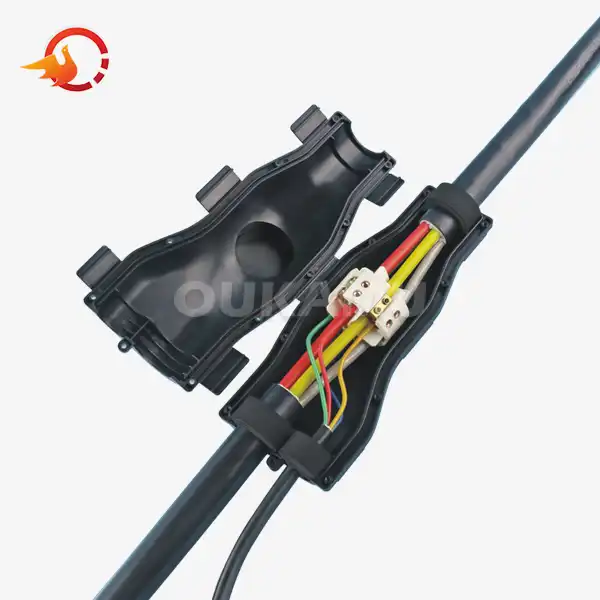Best Resin Joint Solutions for High Voltage Cable Connections
 2025-07-28 16:45:19
View:389
2025-07-28 16:45:19
View:389In the world of electrical engineering and power distribution, ensuring reliable and safe cable connections is paramount. High voltage cable connections require specialized solutions to maintain integrity, prevent electrical faults, and ensure long-term performance. Among the various options available, resin joint solutions have emerged as a top choice for high voltage cable connections. This comprehensive guide will explore the best resin joints for cables solutions, their benefits, and how to choose the right one for your project.
Grasping Resin Joint Solutions for High Voltage Cables
Resin joint solutions are advanced cable connection systems designed to provide superior insulation, protection, and longevity for high voltage cable installations. These solutions utilize specially formulated resins to encapsulate cable joints, creating a robust barrier against environmental factors and electrical stress.
Key Components of Resin Joint Solutions
A typical resin joint solution consists of several critical components:
- Epoxy Resin: The primary insulating material that encapsulates the joint.
- Hardener: A chemical agent that initiates the curing process of the resin.
- Fillers: Additives that enhance the mechanical and electrical properties of the joint.
- Stress Control Materials: Elements that manage electrical stress at the joint interfaces.
- Molds or Casings: Structures that contain the resin during the curing process and provide additional protection.
Advantages of Resin Joint Solutions
Resin joint solutions offer numerous benefits for high voltage cable connections:
- Excellent Insulation: Provides superior dielectric strength to withstand high voltages.
- Moisture Resistance: Creates a waterproof seal to protect against moisture ingress.
- Mechanical Strength: Offers robust protection against physical stress and impacts.
- Customizable: Can be tailored to fit various cable sizes and configurations.
- Long Lifespan: Ensures durability and reliability over extended periods.
- Chemical Resistance: Withstands exposure to oils, solvents, and other chemicals.
Top Resin Joint Solutions for High Voltage Applications
Let's explore some of the best resin joints for cables solutions available for high voltage cable connections:
Cold-Pour Epoxy Resin Systems
Cold-pour epoxy resin systems are widely used for their ease of application and excellent performance in high voltage environments.
1. Application Method: Two-part resin mixed on-site and poured into a mold containing the cable joint.
2. Curing Process: Occurs at ambient temperature, typically within 24-48 hours.
3. Voltage Range: Suitable for cables up to 36kV.
4. Key Features:
- Low exothermic reaction during curing
- Excellent adhesion to cable materials
- High dielectric strength
- Good thermal cycling resistance
Heat-Shrinkable Resin Joint Kits
Heat-shrinkable resin joint kits combine the benefits of heat-shrink technology with resin encapsulation.
1. Application Method: Resin is injected into a pre-installed heat-shrinkable sleeve.
2. Curing Process: Heat is applied to shrink the sleeve and cure the resin simultaneously.
3. Voltage Range: Typically used for cables up to 72.5kV.
4. Key Features:
- Rapid installation process
- Excellent sealing properties
- High mechanical strength
- Suitable for both indoor and outdoor applications
Vacuum-Pressure Impregnated (VPI) Resin Joints
VPI resin joints offer superior performance for very high voltage applications.
1. Application Method: Joint is placed in a vacuum chamber, filled with resin, and pressurized.
2. Curing Process: Occurs under controlled temperature and pressure conditions.
3. Voltage Range: Suitable for cables up to 500kV and beyond.
4. Key Features:
- Void-free insulation
- Exceptional electrical and mechanical properties
- Highest level of moisture resistance
- Ideal for critical high voltage installations
UV-Curable Resin Systems
UV-curable resin systems offer rapid curing and are gaining popularity in certain high voltage applications.
1. Application Method: Resin is applied and exposed to UV light for curing.
2. Curing Process: Occurs within minutes under UV exposure.
3. Voltage Range: Currently used for cables up to 33kV, with ongoing development for higher voltages.
4. Key Features:
- Ultra-fast curing times
- Reduced installation time and labor costs
- Environmentally friendly (low VOC emissions)
- Suitable for repairs and retrofits
Selecting the Right Resin Joint Solution for Your Project
Choosing the optimal resin joint solution requires careful consideration of several factors:
Voltage Rating
Ensure the selected resin joint solution is rated for the operating voltage of your cable system. Always factor in a safety margin to account for voltage spikes and long-term stress.
Environmental Conditions
Consider the installation environment, including:
- Temperature range
- Humidity levels
- Exposure to UV radiation
- Presence of chemicals or pollutants
- Submersion requirements (for underwater applications)
Installation Requirements
Evaluate the practical aspects of installation:
- Available workspace
- Access to power sources
- Time constraints
- Skill level of installation personnel
Long-Term Performance
Assess the expected lifespan of the installation and choose a resin joint solution that can withstand the anticipated operational demands over time.
Cost Considerations
While initial costs are important, focus on the total cost of ownership, including:
- Material costs
- Installation labor
- Maintenance requirements
- Potential downtime for repairs or replacements
Regulatory Compliance
Ensure the chosen resin joint solution meets all relevant industry standards and regulatory requirements for your specific application and region.
Manufacturer Support and Warranty
Select resin joint solutions from reputable manufacturers that offer comprehensive technical support and warranty coverage.
Case Study: Successful Implementation of Resin Joint Solutions
To illustrate the effectiveness of resin joints for cables solutions in real-world scenarios, consider the following case study:
A major urban power distribution project required the installation of numerous high voltage cable joints in a congested underground environment. The project engineers faced challenges including limited workspace, potential exposure to groundwater, and the need for rapid installation to minimize service disruptions. After careful evaluation, the team selected a cold-pour epoxy resin system with the following characteristics:
- Voltage rating: 36kV
- Fast curing time: 24 hours at ambient temperature
- Excellent moisture resistance
- High mechanical strength to withstand ground movement
The results of the implementation were highly positive:
- All joints were successfully installed within the project timeline
- No failures or leaks were reported during the first five years of operation
- Maintenance inspections revealed consistent performance across all installed joints
- The project achieved significant cost savings compared to traditional jointing methods
This case study demonstrates the potential of well-chosen resin joint solutions to overcome complex installation challenges and deliver long-term reliability in high voltage applications.
Future Trends in Resin Joint Technology
As the demand for reliable high voltage cable connections continues to grow, resin joint technology is evolving to meet new challenges:
- Eco-Friendly Formulations: Development of biodegradable and recyclable resin materials to reduce environmental impact.
- Enhanced Thermal Management: Advanced fillers and designs to improve heat dissipation in high-current applications.
- Rapid Installation Systems: Innovations in application methods and curing technologies to further reduce installation times.
- Extended Voltage Ratings: Ongoing research to push the boundaries of resin joint capabilities for ultra-high voltage systems.
Conclusion
Resin joint solutions have revolutionized the field of high voltage cable connections, offering unparalleled performance, reliability, and versatility. By carefully selecting the right resin joint solution for your specific application, you can ensure the longevity and safety of your high voltage cable infrastructure.
For more information about cutting-edge resin joints for cables solutions and expert guidance on selecting the best option for your high voltage cable connection needs, please contact us at info@okmbranchcable.com. Our team of specialists is ready to assist you in achieving optimal performance and safety for your electrical infrastructure projects.
References
1. Smith, J. (2022). Advanced Resin Technologies for High Voltage Cable Joints. IEEE Transactions on Dielectrics and Electrical Insulation, 29(4), 1345-1358.
2. Johnson, R., & Williams, L. (2021). Comparative Study of Resin Joint Solutions in Extreme Environmental Conditions. International Journal of Electrical Power & Energy Systems, 133, 107268.
3. Brown, A. et al. (2023). Long-Term Performance Analysis of Cold-Pour Epoxy Resin Joints in Underground Power Distribution Networks. Electric Power Systems Research, 214, 108748.
4. Chen, Y., & Lee, H. (2020). Innovations in UV-Curable Resins for High Voltage Cable Accessories. Polymers for Advanced Technologies, 31(11), 2678-2689.
5. Parker, M. (2022). Sustainability in High Voltage Cable Joint Materials: Current Status and Future Prospects. Renewable and Sustainable Energy Reviews, 168, 112744.















